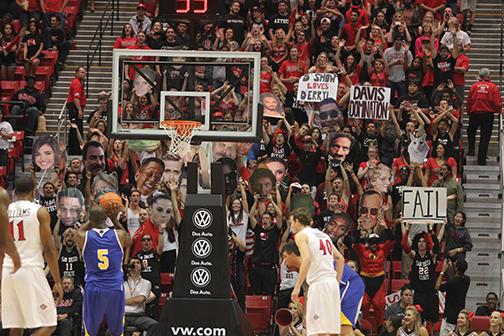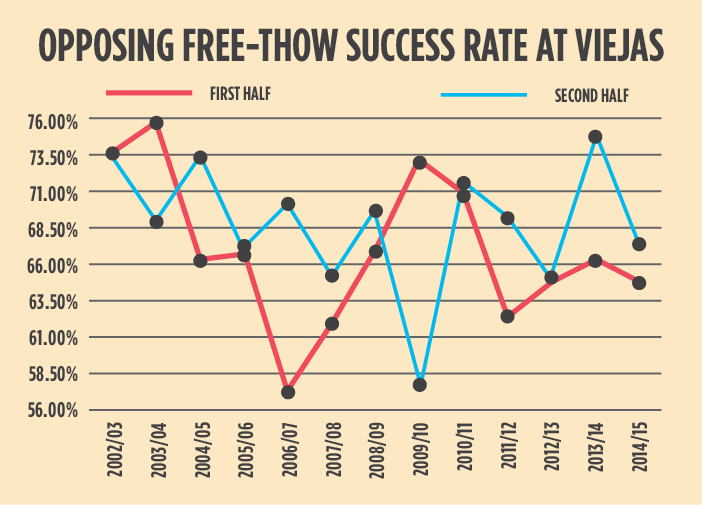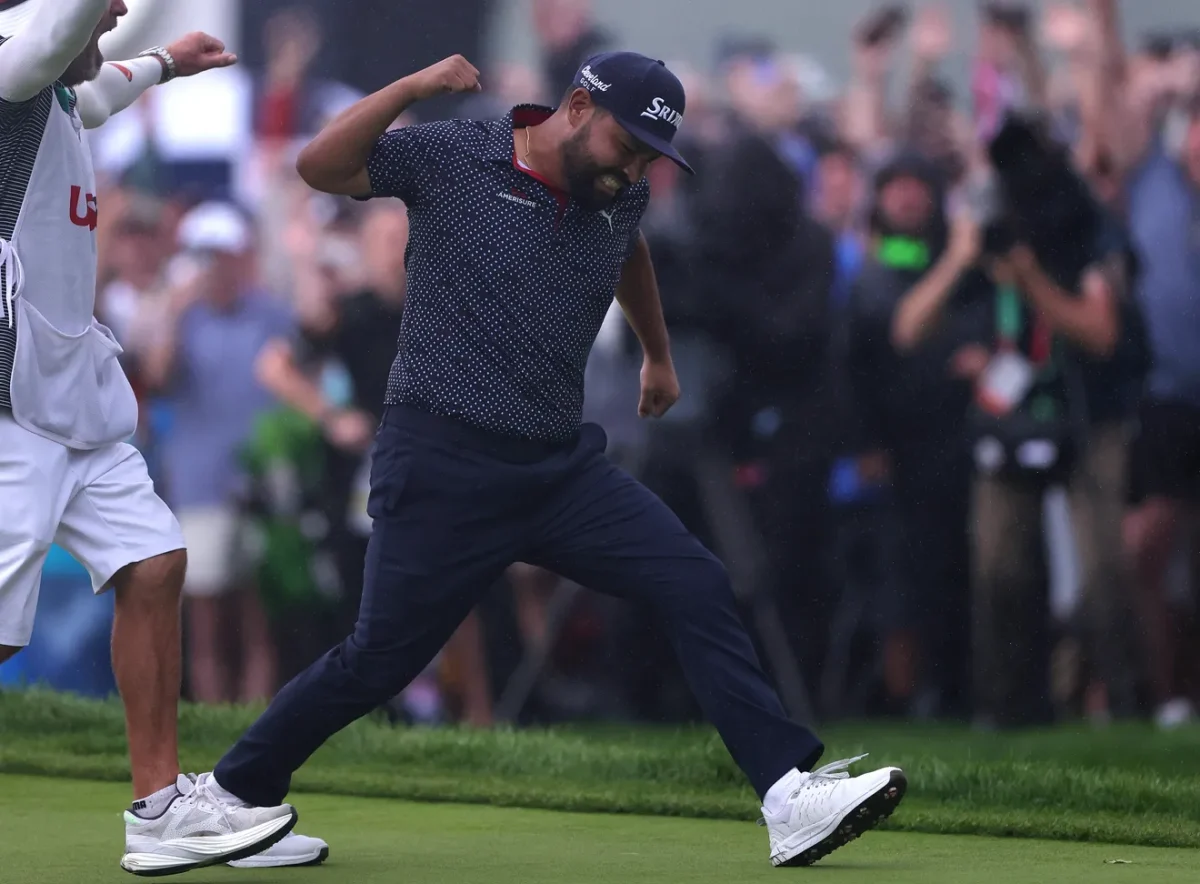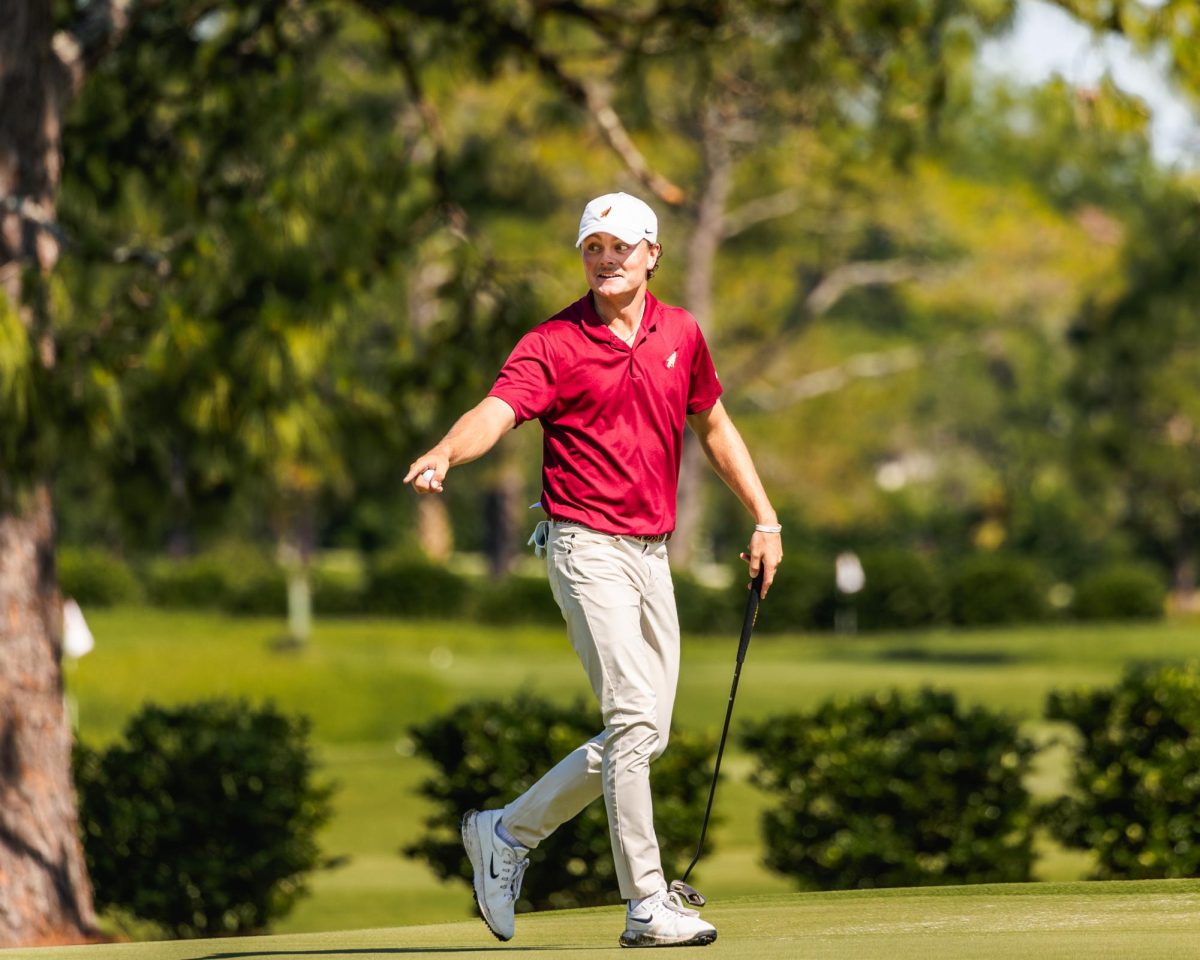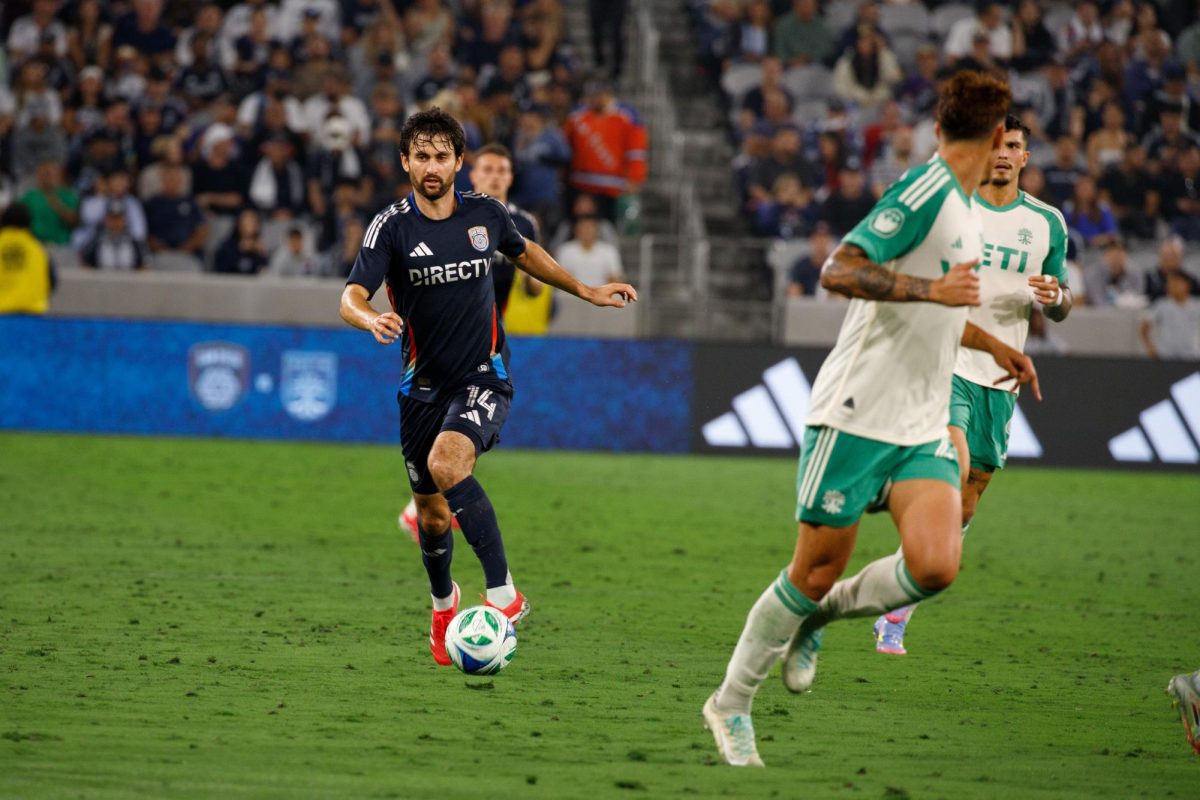It’s the second half of a men’s basketball game in Viejas Arena. An opposing player goes up for a shot and gets fouled. After that, what happens behind the basket is bedlam.
Childish Gambino, Will Ferrell, Yoshi, Rob Ford, Kim Jong Il and Dick Vitale are just a few famous faces who stare down opposing free-throw shooters in the second half of San Diego State men’s basketball games.
With the help of the cacophonous wall of noise that is “The Show” — SDSU’s passionate student section — one would think there’s no way any opposing player would ever make a second-half free throw.
Think again.
Opposing players actually have a better free-throw percentage when shooting in front of “The Show” than at the other end — a surprising discovery when weighed against the recent success of the SDSU’s men’s hoops program.
An analysis of opposing free-throw percentages during the last 13 seasons shows the Aztecs’ opponents shot better from the free-throw line in the second half in 10 of those seasons and shot an average of 1.7 percentage points higher in games at Viejas Arena throughout the last 13 seasons.
This year there’s a noticeable difference. Visitors in Viejas Arena shot 64.7 percent in the first half, then improved to 67.4 percent in the second half.
SDSU’s record apparently has no effect either.
During that magical 34-3 season in 2010-11, opponents shot 70.9 percent from the line in the first half, lower than the 71.7 percent they shot while facing “The Show” during its “Jimmer vs. Kawhi” glory days.
In 2004-05, two seasons after “The Show” started using the giant cutouts of the who’s who of Hollywood and pop culture, opponents shot 73.3 percent facing the students, compared to 66.3 percent at the other end. SDSU’s record that year was 11-18.
While that may not be the biggest gap, consider 2011-12 when the Aztecs went 26-8 and their opponents shot 62.4 percent in the first half and 69.2 percent in front of “The Show.”
A lot of people like to believe that “The Show” is nearly impossible to shoot in front of, so what’s the explanation?
Utah State University’s sophomore guard Jalen Moore said “The Show” isn’t unsettling.
“Coming from a place like (Utah State) where we already have a crazy student section, you just get used to it,” Moore said. “A lot of places have student sections like that, so when you go to place like (Viejas Arena) you’re just used to it.”
That’s especially true in the Mountain West. The last two times Boise State University has traveled to Viejas Arena, BSU’s junior guard Mikey Thompson has shot 8-8 from the line in the second half. SDSU won in 2014 by three points and Boise won last month by 10. Thompson finished this season as a 77.9 percent shooter.
Moore himself went 5-6 from the line in front of “The Show” in January and finished as a 74.7 percent shooter from the line.
When SDSU played the University of Washington in 2013, Washington’s Andrew Andrews came into the game shooting 69.7 percent from the free-throw line. Andrews put up a 6-6 second-half free-throw performance.
The point? No big-game impact from “The Show” on that day.
Based on the data, it’s easy to write off “The Show” and it’s easier to do so when people acknowledge that it used to be better, as Taylor Bern of the Las Vegas Sun wrote in 2014.
Obviously, SDSU isn’t the only student section in the country that tries to prevent opposing teams from scoring.
Arizona State University’s student section’s new way of affecting free-throw shooters is “The Curtain of Distraction.” It’s a black curtain behind the basket, and when an opposing free-throw shooter prepares to shoot, the curtain opens and a random skit plays out from members of the student section, which has only 942 members compared to “The Show’s” 2,500.
Justin Wolfers of the New York Times recently wrote an article about “The Curtain”
showing ASU’s overall opponent free-throw percentage dropped from 75 percent during the 2012-13 season to 60 percent during the 2013-14 season, when “The Curtain” debuted. It works because it’s different — you don’t know what’s coming.
When “The Show’s” big heads debuted in 2002, opposing free-throw shooters shot 73.2 percent in the second half. The next season, opponents shot 68.9 percent in the second half at Viejas. It was still new; teams didn’t know how to ignore it.
At “The Show’s” height between 2010 and 2012, opposing free-throw percentage in the second half dropped by 6.8 points over three seasons.
But that drop may also be attributed Viejas Arena’s attendance nearly doubling during those three years. As fans filled the seats, opposing free-throw shooters shot worse.
There’s still another question: Why do opposing teams shoot better when facing “The Show” than at the other end, where just a few of the fans are waving their arms?
“Some players may like to shoot in front of the student section,” Moore said. “Maybe it’s motivating for them to hear some of the stuff they say.”
How can “The Show” make a tangible impact? Get everyone involved. Too frequently it’s the front rows that are cheering. Do simple cheers that everyone knows, not insider cheers that only 50 people know.
Part of getting all the students involved is getting them on the same page. With 2,500 students, there’s a lot of potential to make an impact. Organize something like the Midnight Yell at Texas A&M University.
Opponents used to see cardboard celebrities when staring into “The Show.” Now, they just see the basket.



